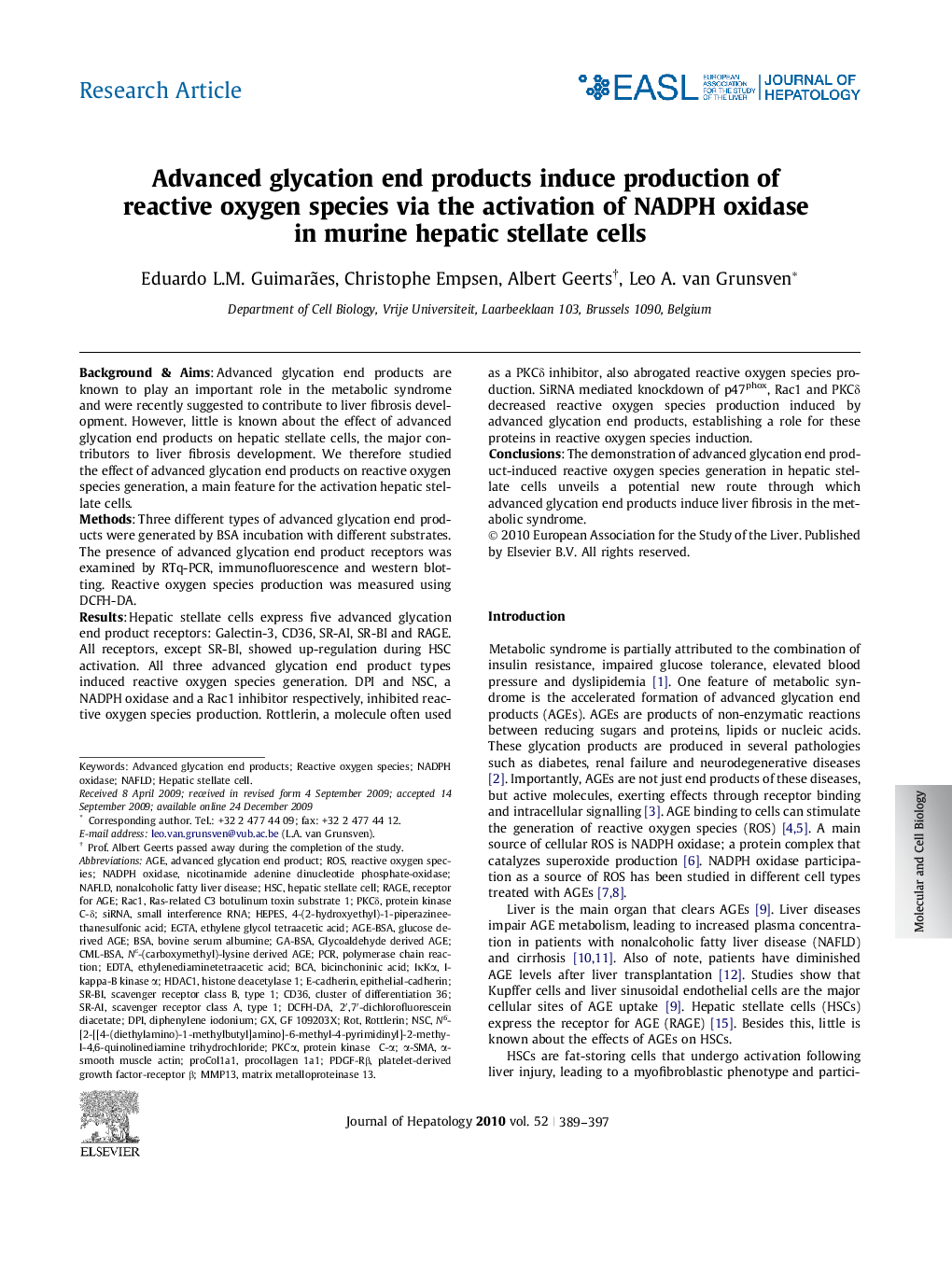| Article ID | Journal | Published Year | Pages | File Type |
|---|---|---|---|---|
| 6109552 | Journal of Hepatology | 2010 | 9 Pages |
Background & AimsAdvanced glycation end products are known to play an important role in the metabolic syndrome and were recently suggested to contribute to liver fibrosis development. However, little is known about the effect of advanced glycation end products on hepatic stellate cells, the major contributors to liver fibrosis development. We therefore studied the effect of advanced glycation end products on reactive oxygen species generation, a main feature for the activation hepatic stellate cells.MethodsThree different types of advanced glycation end products were generated by BSA incubation with different substrates. The presence of advanced glycation end product receptors was examined by RTq-PCR, immunofluorescence and western blotting. Reactive oxygen species production was measured using DCFH-DA.ResultsHepatic stellate cells express five advanced glycation end product receptors: Galectin-3, CD36, SR-AI, SR-BI and RAGE. All receptors, except SR-BI, showed up-regulation during HSC activation. All three advanced glycation end product types induced reactive oxygen species generation. DPI and NSC, a NADPH oxidase and a Rac1 inhibitor respectively, inhibited reactive oxygen species production. Rottlerin, a molecule often used as a PKCδ inhibitor, also abrogated reactive oxygen species production. SiRNA mediated knockdown of p47phox, Rac1 and PKCδ decreased reactive oxygen species production induced by advanced glycation end products, establishing a role for these proteins in reactive oxygen species induction.ConclusionsThe demonstration of advanced glycation end product-induced reactive oxygen species generation in hepatic stellate cells unveils a potential new route through which advanced glycation end products induce liver fibrosis in the metabolic syndrome.
